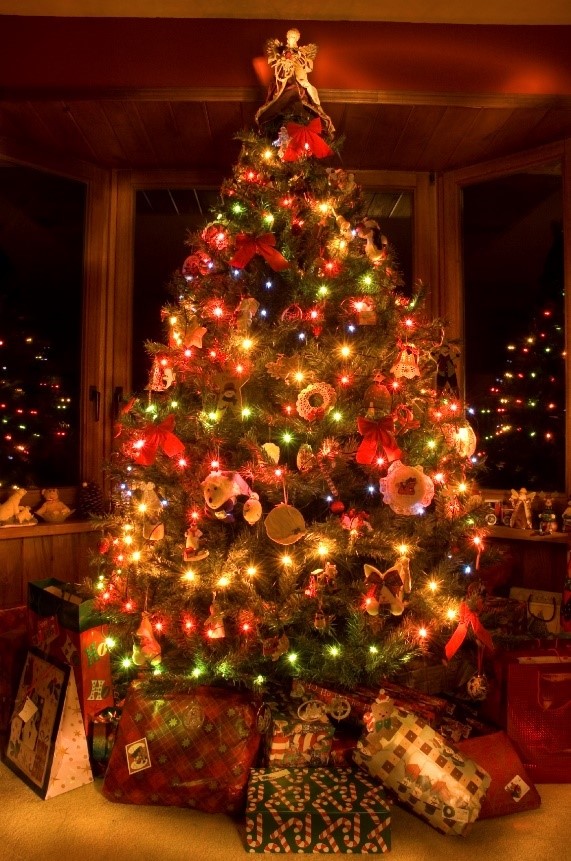
The Christmas tree: It’s long been a symbol of the holiday season.
Each year, people around the world cut down an evergreen tree and decorate it with lights and ornaments, but have you ever thought about how this tradition started?
People started putting lights – candles to be more specific – on Christmas trees in the middle of the 17th century. These were attached to the end of tree branches with wax or pins and were adhered to the tree to represent shining stars. This tradition started in Germany and spread to Eastern Europe over the next two centuries. Because this was a serious fire hazard, most people didn’t put their trees up until December 24, ensuring that they would only be up for a brief period of time while the tree was still fresh – and much less flammable.
The custom of putting strings of lights on trees began in 1882 when Edward Johnson – an associate of Thomas Edison – wired red, white and blue bulbs together and placed them on an evergreen tree. In 1895, President Grover Cleveland followed suit and decorated a Christmas tree in the White House with stringed lights. The public took notice, and the tradition started to catch on.
However, it was extremely expensive to have a lit Christmas tree. General Electric sold bulbs for this purpose, but they needed to be wired together by a professional electrician. Additionally, if a homeowner wanted a lit Christmas tree, but didn’t have electricity yet, they’d have to purchase a generator to keep the lights on.
In 1903, the American Eveready Company developed an easier to use light set involving screw-in bulbs and a plug-in for the wall socket. Even with this easier to use equipment, electric tree lights weren’t catching on rapidly. People were still using unsafe candles as a way to light their trees, until Albert Sadacca came up with the idea to make the lights multi-colored in 1917.
He and his two brothers Henri and Leon started NOMA Electric Company, which became the largest Christmas lighting company in the world. Since that time, lights have continued to evolve.
Miniature bulb sets came about in the late 1960s and came in strands of 25 or 50 lights. These were very similar to the standard miniature lights available today. However, there are more options available for size and color today than there were in the past.
The latest advancement in holiday lights is the use of LED (light-emitting diode) technology. These lights are far more efficient than incandescent lights and have a much longer life-span.